Related Research Articles
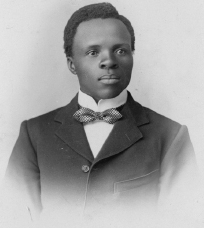
Solomon Tshekisho Plaatje was a South African intellectual, journalist, linguist, politician, translator and writer. Plaatje was a founding member and first General Secretary of the South African Native National Congress (SANNC), which became the African National Congress (ANC). The Sol Plaatje Local Municipality, which includes the city of Kimberley, is named after him, as is the Sol Plaatje University in that city, which opened its doors in 2014.

Cecil John Rhodes was an English colonialist, mining magnate and politician in southern Africa who served as Prime Minister of the Cape Colony from 1890 to 1896. He and his British South Africa Company founded the southern African territory of Rhodesia, which the company named after him in 1895. He also devoted much effort to realising his vision of a Cape to Cairo Railway through British territory. Rhodes set up the Rhodes Scholarship, which is funded by his estate.
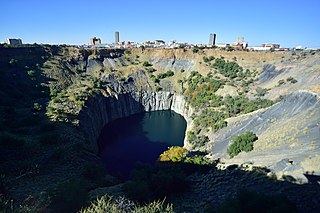
Kimberley is the capital and largest city of the Northern Cape province of South Africa. It is located approximately 110 km east of the confluence of the Vaal and Orange Rivers. The city has considerable historical significance due to its diamond mining past and the siege during the Second Anglo-Boer war. British businessmen Cecil Rhodes and Barney Barnato made their fortunes in Kimberley, and Rhodes established the De Beers diamond company in the early days of the mining town.

The Eastern Cape is one of the nine provinces of South Africa. Its capital is Bhisho, but its two largest cities are East London and Gqeberha.

The National Library of South Africa is the agency of the government of South Africa which maintains a national library of all published materials relating to the country.

Sir Herbert Baker was an English architect remembered as the dominant force in South African architecture for two decades, and a major designer of some of New Delhi's most notable government structures. He was born and died at Owletts in Cobham, Kent.

Makhanda, also known as Grahamstown, is a town of about 140,000 people in the Eastern Cape province of South Africa. It is situated about 110 kilometres (70 mi) northeast of Gqeberha and 130 kilometres (80 mi) southwest of East London. It is the largest town in the Makana Local Municipality, and the seat of the municipal council. It also hosts Rhodes University, the Eastern Cape Division of the High Court, the South African Library for the Blind (SALB), a diocese of the Anglican Church of Southern Africa, and 6 South African Infantry Battalion. Furthermore, located approximately 3 km south-east of the town lies the world renowned Waterloo Farm, the only estuarine fossil site in the world from 360 million years ago with exceptional soft-tissue preservation.
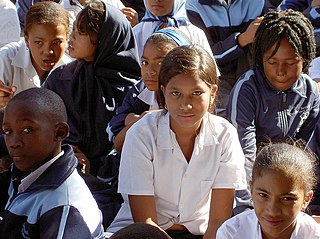
Education in South Africa is governed by two national departments, namely the Department of Basic Education (DBE), which is responsible for primary and secondary schools, and the Department of Higher Education and Training (DHET), which is responsible for tertiary education and vocational training. Prior to 2009, both departments were represented in a single Department of Education. Among sub-Saharan African countries, South Africa has one of the highest literacy rates. According to The World Factbook - Central Intelligence Agency as of 2019, 95% of the population age 15 and over can read and write in South Africa were respectively literate.

Selmar Schonland, originally spelt Schönland, the founder of the Department of Botany at Rhodes University, was a German immigrant, who came to the Eastern part of the Cape Colony in 1889 to take up an appointment as curator of the Albany Museum. He came to Grahamstown via a doctorate at the University of Hamburg and a post at Oxford University. Working under Prof. Sir Isaac Bayley Balfour and Prof. Sydney Howard Vines, he developed an interest in the family Crassulaceae and contributed an account of this group to Engler & Prantl's Natürl. Pflanzenfamilien.

The McGregor Museum in Kimberley, South Africa, originally known as the Alexander McGregor Memorial Museum, is a multidisciplinary museum which serves Kimberley and the Northern Cape, established in 1907.

The Western Cape Division of the High Court of South Africa is a superior court of law with general jurisdiction over the Western Cape province of South Africa. The division, which sits at Cape Town, consists of 31 judges led by Acting Judge President Patricia Goliath, former Acting Constitutional Court Justice.
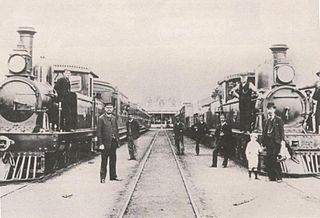
The Cape Government Railways (CGR) was the government-owned railway operator in the Cape Colony from 1874 until the creation of the South African Railways (SAR) in 1910.
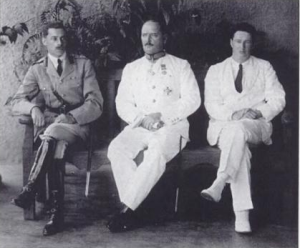
Sir Robert Thorne Coryndon, was a British colonial administrator, a former secretary of Cecil Rhodes who became Governor of the colonies of Uganda (1918–1922) and Kenya (1922–1925). He was one of the most powerful of colonial administrators of his day.

The Sol Plaatje University, which had provisionally been referred to as the University of the Northern Cape, opened in Kimberley, South Africa, in 2014, accommodating a modest initial intake of 135 students. The student complement is expected to increase gradually towards a target of 7 500 students by 2024. Launched in a ceremony in Kimberley on 19 September 2013, it had been formally established as a public university in terms of Section 20 of the Higher Education Act of 1997, by way of Government Notice 630, dated 22 August 2013. Minister of Higher Education and Training, Blade Nzimande, observed at the launch that this “is the first new university to be launched since 1994 and as such is a powerful symbol of the country’s democracy, inclusiveness, and growth. It represents a new order of African intellect, with a firm focus on innovation and excellence." Previously announcing the name for the university, on 25 July 2013, President Jacob Zuma mentioned the development of academic niche areas that did not exist elsewhere, or were under-represented, in South Africa. "Given the rich heritage of Kimberley and the Northern Cape in general," Zuma said, "it is envisaged that Sol Plaatje will specialise in heritage studies, including interconnected academic fields such as museum management, archaeology, indigenous languages, and restoration architecture." Prof Andrew Crouch took over the helm on 1 April 2020 after the term of founding Vice-Chancellor, Prof Yunus Ballim came to a close.
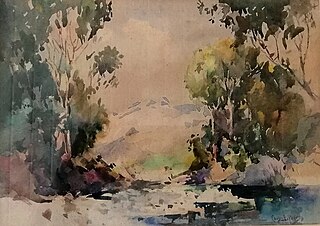
Charles Ernest Peers was a South African artist.
The Rhodes University Library is a library located in Makhanda, under the Makana municipality. It was initially established in 1937 in the Clock Tower building of Rhodes University College.
The South African National Biodiversity Institute (SANBI) is an organisation tasked with research and dissemination of information on biodiversity, and legally mandated to contribute to the management of the country's biodiversity resources.
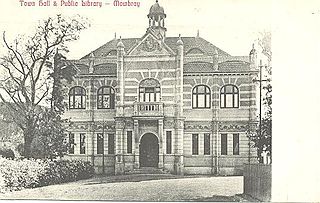
The Molteno Regulations (1874) were a system of government grants to establish free, open-to-all, public libraries, in the Cape Colony, South Africa.
The Cape Mounted Police was the principal law enforcement agency of the Cape Colony during its last three decades. In addition to its ordinary policing duties, it was a para-military organisation, which saw active service in several campaigns and operations, including the Anglo-Boer War (1899–1902). The force was fully militarised in 1913 and transferred to the new South African Army as a mounted rifle regiment.

Constance Georgina Adams, also known as Constance Georgina Tardrew, was a South African housewife and collector of botanical specimens. Known by the nicknames Connie and Daisy, Adams was born in Cape Town and spent her early childhood on a farm in Tulbagh before moving to Warrenton. She subsequently lived in Kimberley before getting married, settling in Johannesburg where she became active in the Housewives League of South Africa. Inspired by her parents' interest in botany, she became a successful collector for both the Albany Museum in Grahamstown and McGregor Museum in Kimberley. She also cultivated a friendship with the Director of the latter, Maria Wilman. She collected over 240 specimens, which were presented to the Albany Museum, McGregor Museum and the National Herbarium in Pretoria.
References
- ↑ Taylor, Loree Elizabeth (1967). South African Libraries. Clive Bingley.
- ↑ Dick, Archie (2007). "DEVELOPMENT OF SOUTH AFRICAN LIBRARIES IN THE 19TH AND 20TH CENTURIES" (PDF). World Library and Information Congress : 73rd IFLA General Conference and Council : Libraries for the future : progress and development of South African libraries, 19–23 August 2007, Durban, South Africa / sponsored by the Department of Arts and Culture ; Theo Bothma, Peter Underwood & Patrick Ngulube (editors). LIASA. Archived from the original (PDF) on 21 October 2014. Retrieved 19 July 2014.
- ↑ "Libraries in the Republic of South Africa". Encyclopedia of library and information science. Vol. 28. Marcel Dekker. 1980.
- ↑ R.J.Holloway: The History and Development of the Kimberley Africana Library and its Relationship with the Kimberley Public Library. UNISA: South Africa. Sept 2009. p.49.
- ↑ Friis, Theodorus (1962). The Public Library in South Africa: An Evaluative Study. Afrikaanse Pers-Boekhandel.
- ↑ R. B. Zaaiman, P. J. A. Roux, and J. H. Rykheer, The Use of Libraries for the Development of South Africa (Pretoria: University of South Africa, (1988)
- ↑ Library er Information Services; Report of the NEPI Library and Information Services Research Group (Cape Town: Oxford University Press, 1992).
- ↑ Lor, P.J. (1996). A distant mirror: the story of libraries in South Africa. Daedalus: journal of the American Academy of Arts and Sciences 125(4):235-265.
- ↑ "Libraries". Standard Encyclopaedia of Southern Africa. 1972.